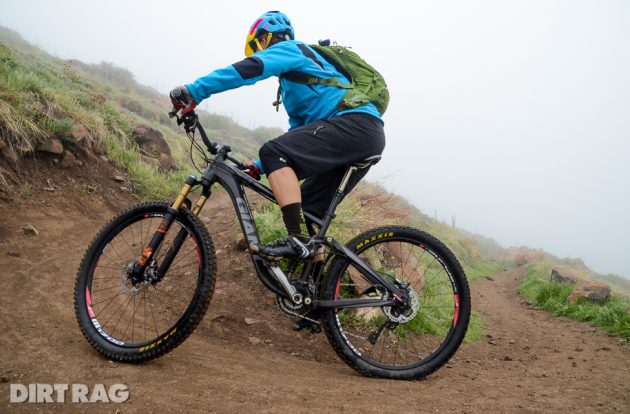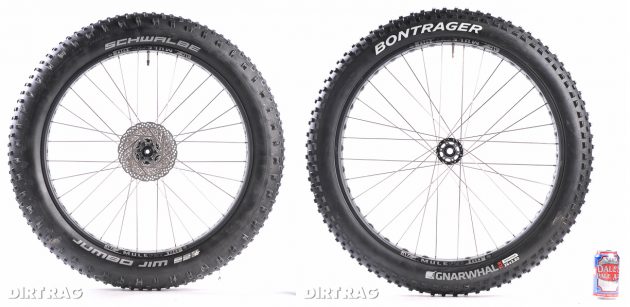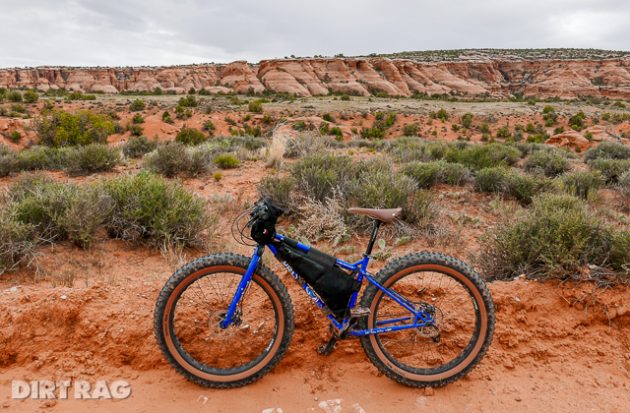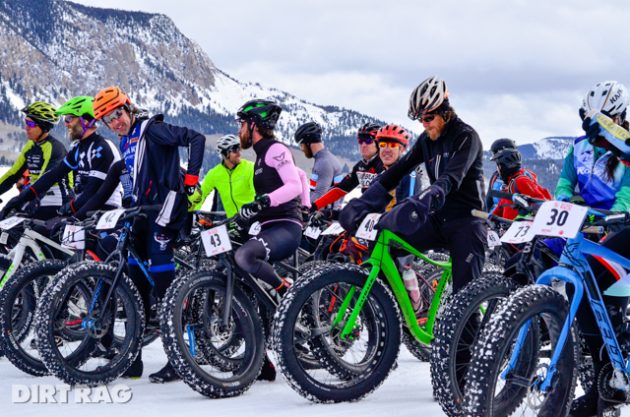The Wheel Size Explainer
Originally posted on May 13, 2016 at 12:36 pmIt was the best of times, it was the worst of times, it was the age of wisdom, it was the age of foolishness, it was the epoch of belief, it was the epoch of incredulity, it was the season of Light, it was the season of Darkness, it was the spring of hope, it was the winter of despair, we had everything before us, we had nothing before us, we were all going direct to Heaven, we were all going direct the other way. – Charles Dickens, A Tale of Two Cities

Intro
A time comes for most of us to buy new bikes. The fact is, mountain bikes keep getting better, and newer ones perform better than the old ones in every possible way, save for keeping your credit card balance in check. But new bikes also keep getting more complicated, with genres and subgenres and wheel sizes and single-ring drivetrains and all the rest. We could go down a very, very deep rabbit hole trying to suss out all that stuff, so let’s stick, for the most part, to wheel size and tire width.
As a whole, when it comes to wheels and tires, the bike industry has been historically slow to move. Over a decade ago the resistance to 29 inch wheels took on an almost religious fervor, with some companies going as far as declaring “no 29ers, ever.” Obviously, we all know who lost in the great 29 vs. 26 conflict.

Companies that held out against 29ers (and to a lesser extent, fat bikes) soon realized this was a strategic mistake, and the pain could be felt via lost sales and leftover inventory. It now seems we’ve swung the other way, with new wheel size ideas being adopted much more quickly.
Some riders grumble that this is all just a money grab on the part of bike makers, forcing obsolescence on older models and equipment as new wheel sizes (and hub spacing, and bottom bracket standards, etc.) take over large parts of the market. But this is nothing new. Technology marches forward, and strangely enough, it doesn’t physically change the bike you are riding, just the perception of its flaws.
My first bike was a Giant Iguana, equipped with Suntour’s last-gasping-breath of a drivetrain, marginally effective Dia-Compe cantilever brakes, and tires with a durometer of weathered oak. If it hadn’t been stolen off a porch years ago, I could still walk into any bike shop and get parts to keep that thing running. Makes it hard to complain about obsolescence when you can easily keep decades-old machinery running with a minimum of fuss.
And let’s not forget, riders always vote for new technology with their wallets. And right now, we all seem to be voting for more options.
Here’s where we stand with tire sizes these days
While there are only three main shared rim diameters (ISO size) among adult bikes, the vast differences in rim and tire widths are what really set all these apart.
The three ISO diameters are:
- 559 ISO – the original 26 inch wheel size
- 584 ISO – 27.5 or 650b
- 622 ISO – 29 or 700c
For simplicity, when referring to “wheel size” it will be one of these below:
Standard Tires (about 1.95-2.5 inch width)
- 26 inch (559 ISO) – the original knobby tire, now mostly relegated to kids’ bikes and dirt jumpers
- 27.5 inch (584 ISO) – also known as 650B, the “slightly bigger than 26 inch” wheel size
- 29 inch (622 ISO) – same rim size as most modern road bikes
Pluses: shorter sidewalls squirm less under hard cornering; rolls quickly; huge selection of bikes and components
Minuses: unpredictable traction in soft conditions; less ability to absorb trail chatter; same old-same old

Fat Bike Tires (3.8-5 inch width)
- 26 x 4 (559 ISO) – the first fat bikes
- 26 x 5 (559 ISO) – wider fat bike tires
- 27.5 x 4 (584 ISO) – new fat size, currently Trek-only
Pluses: traction for days; flotation for days; squishy tires absorb trail irregularities
Minuses: all that rubber is heavy; self-steer issues on off-camber trails; hard to balance tire pressure to prevent both squirm and bounce; wide pedal stance can bother some riders; squirmy in high-load situations; limited to mostly rigid bikes or hardtails; the faster you go, the weirder it gets

Plus Tires (2.8-3 inch width)
- 26plus (559 ISO) – quite rare, but rumored to become more prevalent
- 27plus (584 ISO) – most common plus size
- 29plus (622 ISO) – the biggest of the big
Pluses: not much heavier than sturdy 2.3 inch wide tires; traction in unpredictable terrain; less squirm and bounce than fat bike tires; can fit in some frames and forks not specifically designed for plus tires
Minuses: hard cornering loads can still cause squirm unless heavy tires and wide rims are used; can be unpredictable on off-camber and high traction terrain; slim (but expanding) selection of tires and rims; sidewalls can be susceptible to cuts
Choosing
There are lots of other things besides tire size that should be considered (geometry, suspension travel, etc.); but it is tires, and tire pressure, that transfer all our braking, steering and acceleration to the trail. So, let’s break mountain biking down into a few categories and make some recommendations:

Expedition/Bikepacking/Exploring
OUR PICKS: PLUS, FAT TIRES
For long rides on unknown terrain, it is hard to go wrong with bigger tires. While fat bike tires might be too much for areas without large amounts of sand or snow, a lot of exploratory types would rather have more than enough tire than too little. The plus tires are a good all-around choice that should balance grip, fl oat and weight quite well. For covering large amounts of unpredictable terrain quickly, there is really nothing like a 29plus bike.
Sand/Snow
OUR PICK: FAT TIRES
The best bet for deep sand and snow is floatation, and the widest tires are the way to go here.

Cross-Country Racing/Fitness Riding
OUR PICK: STANDARD TIRES
When it comes down to who has the strongest legs and biggest lungs, fast is the way to go. And unlike gravity racing, cross country is won on the climbs, and that calls for fast-rolling, lightweight tires.

Gravity Riding/Enduro Racing
OUR PICK: STANDARD TIRES
It is relatively easy to go fast in a straight line, but cornering speed is what separates the truly fast guys from everyone else. Cornering hard means extreme loads on tires, and those loads can cause all kinds of fl ex in the tall sidewalls of fat and plus tires. But even as I type this, we are seeing more and more fast riders loving on the plus tires in certain situations.

Trail Riding
OUR PICK: A LA CARTE, MOTHERTRUCKERS
There are really no right answers about what bike to ride on dirt for fun. While some areas can be quite homogeneous, on any given day in most locations you can find people riding dirt on just about anything with knobby (and sometimes not-so-knobby) tires.
Experiment, test ride some bikes, swap bikes with your buddies, enjoy yourself, and don’t get too hung up on what you “should” be riding. That said, if you are looking for a do-it-all trail hardtail, there are a lot of compelling reasons to look at the new crop of 27plus bikes.
The upside to all these choices?
They can break down into similar wheel diameters, making it easier to fit multiple wheel sizes into the same frame. With bikes like Salsa’s Pony Rustler/Horsethief, Advocate’s Hayduke (read our Hayduke review) and the new Santa Cruz Hightower being designed to utilize 29 inch and 27plus tires, we expect this idea to spread to the rest of the industry.
With 2017 product [already being] released, expect to see this dual-wheel-size-compatible idea to spread to 27.5 inch/26plus bikes as well. This should simplify things for manufacturers, shops and consumers. There are going to be some growing pains here, and we’ll probably need to wade through some foolishness to get to the wheel size wisdom we are all seeking.
We’ve been through similar things before, and we’ll go through this again.
This was originally published in Issue #190. Want more? Subscribe to Dirt Rag today and don’t miss any of our tech features. Probably best to keep stuff like this in your shop, or bathroom, anyway.

